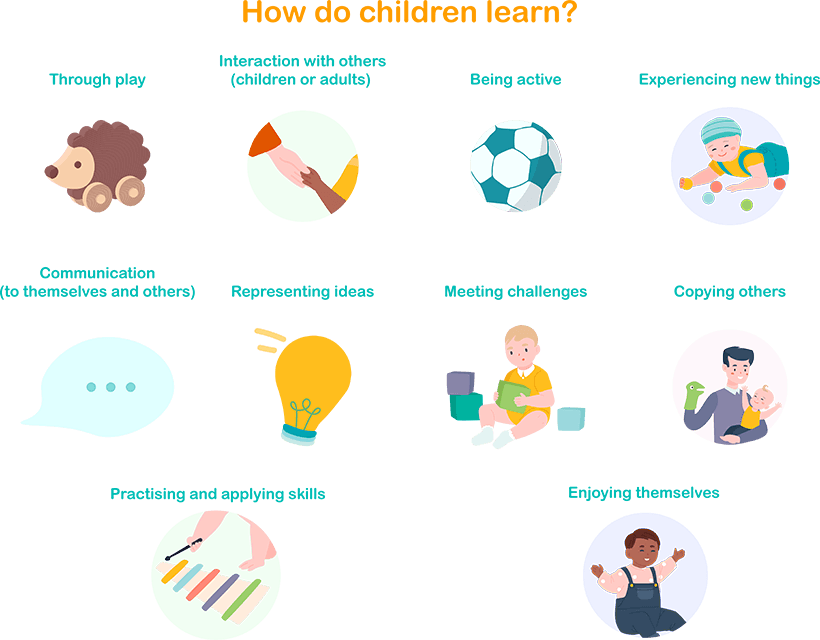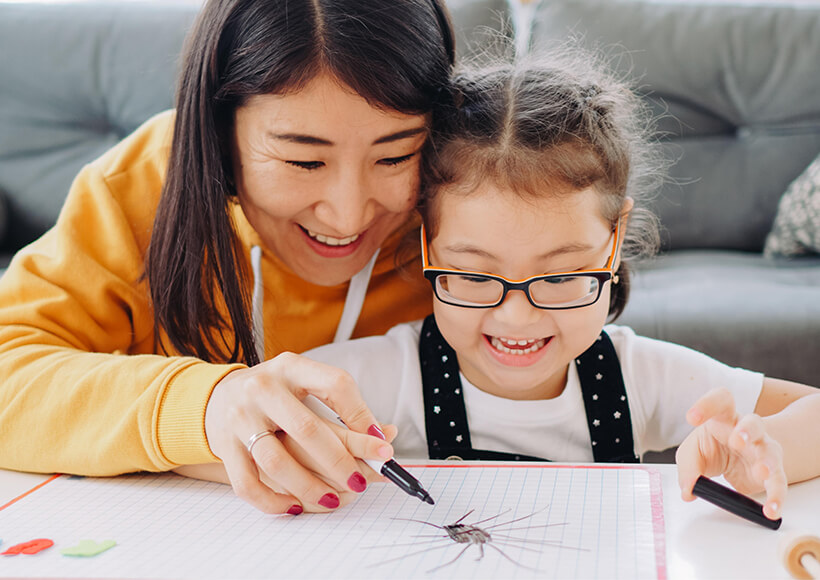Perfecting the balance of learning through independent play is challenging. There is large accountability on your Early Years practitioners and team. They are responsible for the holistic development and progression of all the children in their care.
They can guide them to further their learning, but not too much. They can initiate learning experiences, but not too many. And they can engage in adult-driven conversation, but not too often.
In this article, we share how your team can avoid progress-limiting activities, unpick how children really learn, and explore how to implement child-led learning in your nursery setting effectively.
What is child-led learning?
Child-initiated learning is where open-ended play is encouraged as a vehicle of learning and development. Children can explore learning in their own way without structured guidance from adults. Anything goes with the direction of play or use of resources with child-led learning, within safety parameters, of course. Child-led learning can be the starting point when developing the child’s social skills and experiences, by building on a task they have expressed interest in organically.
Does child-initiated play prepare or hinder children for school?
Child-led learning helps to build confidence, social skills and curiosity for learning. These skills are vital for a confident transition from nursery to primary school. Some life experiences benefit from being child-led due to differences in personality and social confidence.
Developmental milestones such as making friends, solving problems, and conflict resolution can be valuable skills to learn with subtle adult guidance that will be experienced more with child-led activities rather than highly structured ones.

How can adult-led learning hinder a child’s progress?
You will not be surprised to learn that many nursery owners and managers recognise the benefits of effectively implementing open-ended learning methods in their EYFS curriculum. This is done by applying the Curiosity Approach’s guidance when allowing children to explore unknown objects or experiences.
There can be too much structure from adults when children are learning through play. Dictating the play’s direction, length of time and purpose to fit their own concepts of learning rather than allowing for free exploration.
Can resources limit children’s play opportunities?
It can be a misunderstanding that for children to engage with free choice effectively, unstructured play must have specific resources. The beauty of unstructured play centres around the principles of loose parts play: any object can be used for inspiration.
Natural, artificial, textured, or synthetic materials can make up an extensive list of cost-effective and recycled resources for loose parts play. Toys and materials with one explicit use (a plastic toy car, for example) can limit free-play exploration as it reduces the amount of inspiration used to make it exciting.
Talking too much or too little can limit a toddler’s progress
You may remember the Every Child a Talker document (2011), which introduced the 5-finger rule for engaging with children. This can be useful when explaining to your staff how much is too much involvement when a child is exploring child-led learning.
Following up one interaction or child-led question with five other conversation developers can be a good gauge of the perfect balance of interaction. To make your EYFS CPD sessions purposeful, discuss a bank of statements that can be used as the 5.

What types of learning are there in EYFS?
Some of your more experienced nursery practitioners will naturally know the different learning structures. Incorporating a balance when interacting with children. When supporting new staff members or apprentices in the nursery, it’s essential to explain the four main types of play:

How can my nursery team track progress with learning through play?
Structured activities are easier to assess and track due to measurable outcomes. Your team will track the children’s progress using the Early Learning Goals as guidance, recording evidence that the child is secure to meet a Good Level of Development.
Unstructured play can be more challenging to evidence but can offer a depth of progress that tabletop activities cannot.
First, your nursery team must be confident in the ELG expectations; this is often regularly readdressed throughout the annual CPD calendar. Your staff will find recording progress easier using a nursery management software, accessible to all and via a portable device.
Ensure your software provides features that enable you to monitor child development easily– using your framework of choice.
It is worth reminding your staff team that progress is not exclusively academic and surrounding Maths and English. The three prime areas of the ELG are communication and interaction, physical development, and personal, social and emotional development, after all.
How to effectively implement child-led learning in your nursery
Child-led learning can have huge developmental benefits. It can, however, be a free-for-all where the children struggle without routine and structure. So, how do you get a good balance? There are several simple ways to implement a child-led curriculum into your setting effectively.
How much time do toddlers need for an activity?
This depends on the activity; too short, and the child’s imagination may be stifled. Too long, and those children who may have additional needs and benefit from a structured routine may begin to struggle.
Discuss with your team the length of time you feel can be dedicated to free play throughout the day, including ideal times in the day when children respond well to the freedom.
What resources can be used for child-led play?
Anything and everything! The resources you may think are used only to build a tower, may become food for a giant. Remove any restrictions on what resources can be used; a sandpit might be used to make a sandcastle or create a race track for the fastest car in the world.
What is the balance between adult-led and child-led play in EYFS?
Ofsted makes no mention of child-led or adult-led play in their inspection expectations. However, they do highlight the need for the EYFS curriculum to be play-based due to the benefits possible for their development.
Encourage your staff to assess children’s needs individually and decide the appropriate level of adult support they may need initially. The end goal should be to encourage confidence and independence with exploration.
How to challenge a child when they are engaging with free play
Child-initiated learning or play doesn’t mean the removal of challenges. Challenge, in just the correct dose, allows for small steps of progress to be made whilst maintaining confidence and curiosity.
Remind your team they can challenge a child:
- With additional social demands (by increasing the number of players to a game),
- To start problem-solving (by posing thoughtful questions), or
- Through critical thinking (by asking for help with a problem and allowing their necessary thinking process to be tested).

Child-initiated learning can have enormous benefits for the children in your childcare setting. It can, however, rely on the strength and knowledge of your nursery practitioners to monitor these unstructured activities, ensuring learning and development are the underpinning driver.
Think about developing your CPD calendar to implement the child-led learning through play curriculum in your setting effectively.
Subscribe to receive expert advice and tips from seasoned professionals in the early years sector.